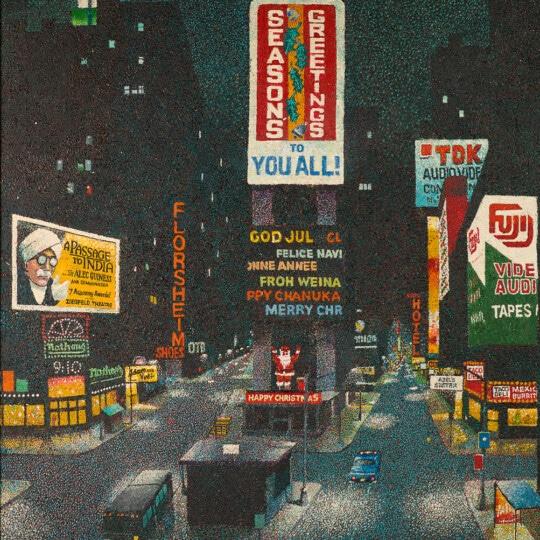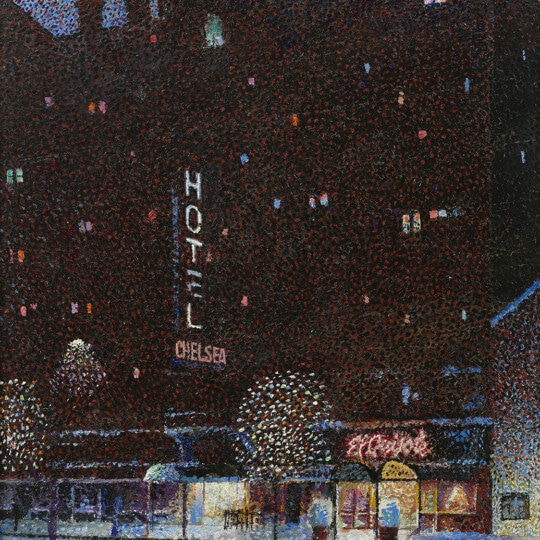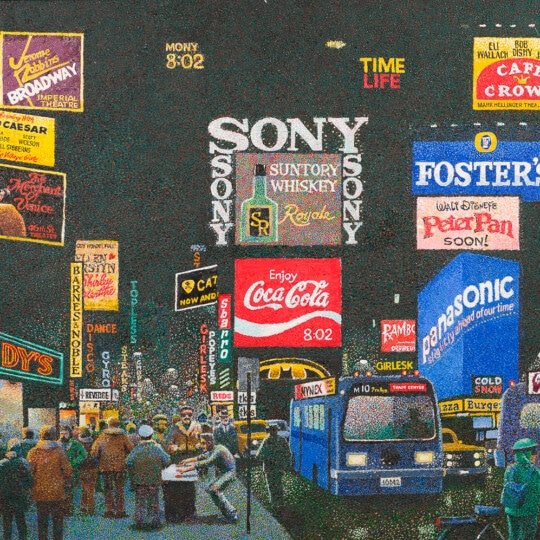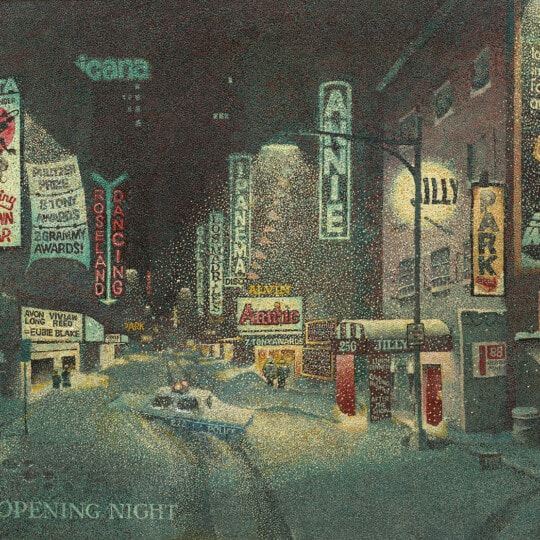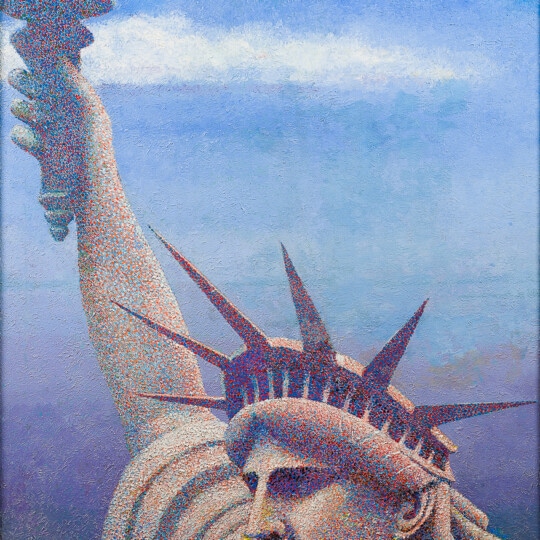Artist Biography
Featured in the Smithsonian Institution’s National Museum of the American Indian, Alec Montroy’s work is characterized by colorful scenes of New York painted in the style of Pointillism. Montroy was born in Detroit, Michigan, to Munsee, Cree, and French parents with ancestry from the Munsee Reserve in St. Thomas, Ontario, Canada. His father died when Montroy was young, and he spent time living with a family in the United States while his mother lived on a reserve in Canada and traveled, working as a dancer in a chorus line. Montroy taught art at Michigan State College and Wayne University in
Featured in the Smithsonian Institution’s National Museum of the American Indian, Alec Montroy’s work is characterized by colorful scenes of New York painted in the style of Pointillism. Montroy was born in Detroit, Michigan, to Munsee, Cree, and French parents with ancestry from the Munsee Reserve in St. Thomas, Ontario, Canada. His father died when Montroy was young, and he spent time living with a family in the United States while his mother lived on a reserve in Canada and traveled, working as a dancer in a chorus line. Montroy taught art at Michigan State College and Wayne University in Michigan before joining a military unit in Ontario where he served for six years in World War II, confined for several years as a German prisoner-of-war. After his military service, Montroy worked as a freelance commercial artist and, in 1965, became Art Director of Lawrence Weiner Associates—an advertising agency for Broadway productions. Montroy would continue working in theatrical advertising for twenty-six years.
While living in New York, Montroy’s art largely centered around the dynamic city. His paintings often feature vibrant marquees and detailed billboards adorning the city streets, as well as iconic landmarks like the Chelsea Hotel, Times Square, and the World Trade Towers. Montroy himself lived at the Chelsea Hotel for many years—a location known for housing many famous artists and musicians. His paintings capture the city throughout various moments in history, documenting the ever-changing buildings, storefronts, and fashions. In an interview, Montroy described, “When I pass away, this art is left. Up there is a picture of Times Square. It’s done from old photographs and my memory,” continuing “if you can leave a painting like that, it will help somebody, if only for fun.”[1] Montroy’s work was included in the 2013 exhibition The Old Becomes the New: New York Contemporary Native American Art Movement and the New York School at the Wilmer Jennings Gallery.
[1] Alec Montroy, “An Interview with Alec Montroy (1918–2006),” interview by Pena Bonita, Talking Stick: Native Arts Quarterly, vol. 8.4 (Fall 2005), https://amerinda.org/talkingstick/8-4/bonita.htm.
Featured in the Smithsonian Institution’s National Museum of the American Indian, Alec Montroy’s work is characterized by colorful scenes of New York painted in the style of Pointillism. Montroy was born in Detroit, Michigan, to Munsee, Cree, and French parents with ancestry from the Munsee Reserve in St. Thomas, Ontario, Canada. His father died when Montroy was young, and he spent time living with a family in the United States while his mother lived on a reserve in Canada and traveled, working as a dancer in a chorus line. Montroy taught art at Michigan State College and Wayne University in Michigan before joining a military unit in Ontario where he served for six years in World War II, confined for several years as a German prisoner-of-war. After his military service, Montroy worked as a freelance commercial artist and, in 1965, became Art Director of Lawrence Weiner Associates—an advertising agency for Broadway productions. Montroy would continue working in theatrical advertising for twenty-six years.
While living in New York, Montroy’s art largely centered around the dynamic city. His paintings often feature vibrant marquees and detailed billboards adorning the city streets, as well as iconic landmarks like the Chelsea Hotel, Times Square, and the World Trade Towers. Montroy himself lived at the Chelsea Hotel for many years—a location known for housing many famous artists and musicians. His paintings capture the city throughout various moments in history, documenting the ever-changing buildings, storefronts, and fashions. In an interview, Montroy described, “When I pass away, this art is left. Up there is a picture of Times Square. It’s done from old photographs and my memory,” continuing “if you can leave a painting like that, it will help somebody, if only for fun.”[1] Montroy’s work was included in the 2013 exhibition The Old Becomes the New: New York Contemporary Native American Art Movement and the New York School at the Wilmer Jennings Gallery.
[1] Alec Montroy, “An Interview with Alec Montroy (1918–2006),” interview by Pena Bonita, Talking Stick: Native Arts Quarterly, vol. 8.4 (Fall 2005), https://amerinda.org/talkingstick/8-4/bonita.htm.

